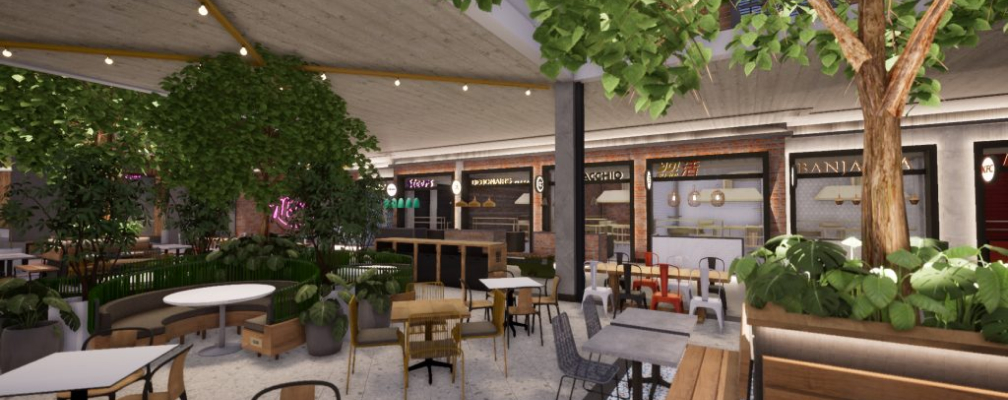Foodtainment

A snapshot of how Shopping Malls are responding to customers changing tastes and expectations with a new generation of food service design.
According to the ICSC’s Food Report, consumer spending on food service has globally been outpacing grocery & retail spending. It is largely driven by a shift from transactional retail to experiential food offers. This trend has been very positive for shopping centres and retail sector that offers more crafted food services, providing the experience appealing to the evolving consumer demands in both retail and leisure spaces. The biggest challenge for landlords is to play a more participative role in shaping this experience in their centres, which is arguably more complex than traditional retail.
Currently there is no playbook for this new model, which means that there is great opportunity for experimentation and evolution, combined with a need to stay fresh and relevant as people look for new experiences and choice. Landlords must not only know their own customer and community, but must also co-create and tailor the food offer to reflect the local tastes and trends. This requires an awareness of food trends, as well as a close working relationship with operators (and influencers) in order to develop and implement new operating models.
FOOD PROVIDES A COOL ATMOSPHERE, PLUS IT GIVES A REASON FOR CUSTOMERS TO STAY LONGER IN SHOPPING CENTRES. IT DEFINITELY PLAYS THE ROLE OF AN ANCHOR, DRAWINGPEOPLE TO CENTRES.
- ICSC THE SUCCESSFUL INTEGRATION OF FOOD & BEVERAGE WITHIN RETAIL REAL ESTATE

The future for this sector is bright, but requires greater rigour in planning and execution. The challenge for the shopping centre industry is to ensure that food service is of the right size, quality and position, is relevant, fresh and competitive and crucially provides the experience to ensure that consumers eat out. Those who can spot trends as they are breaking, and also anticipate future tastes of an ever demanding customer base will be best placed to take advantage of the leisure and hospitality industry’s growth.
The integration and use of curated food services to drive footfall and dwell time has become a key consideration for landlords. As malls need to become more socially and culturally connected to their customers, so will the need for better placemaking become more important and relevant, of which food is undoubtedly a key ingredient.

It is also clear that the social success and relevance of the case studies considered in the review is a result of the emotive and tactile design quality of these environments, in which food plays the role of the connector of people through the love of food, and the need for community and connection.
Our review, based on industry dialogue and relevant case studies, aims to unpack some of the key principles and considerations shaping this shift.
Interested in knowing more? Contact us today.
We sharing some of our latest and greatest projects on Social, connect with us below.



